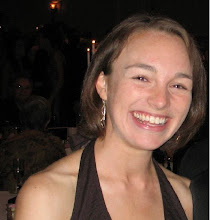When you travel to another country, you expect a certain degree of difference. You anticipate that the customs, the food, the traditions- they will be, well, different. But you assume that within your own country, certain basics remain intact regardless of the region. Simple customs such as eating pork and sauerkraut for good luck on new year's day or ringing in the Lent season with a fasnacht dipped in molasses, I assumed to be inherent customs. (I even thought that fasnacht day was a national holiday.) It wasn't until I moved West, outside of my Pennsylvania dutch bubble that I realized how far the customs of Americans vary.
Although it's far past both New Years and Fasnacht day (also called "Fat Tuesday", the Tuesday preceding Lent/Ash Wednesday), today I was reminded of my PA dutch roots while I scoured through downtown San Francisco for a pretzel. While by no means did I experience a "culture" shock here in California, and my taste buds have happily welcomed the variety of fresh foods, what I have realized is how weird some of my Pennsylvania "basics" are: I don't gawk at the site of an Amish person in a grocery store or at the mall- after all, I have Amish neighbors. I know that Sunday afternoons, I'll hit traffic- buggy traffic- as the Amish communities break from their day-long sermons at local meeting houses. I've eaten many a shoo-fly pie. We have a distelfink hex sign in my basement. I sat down every New Years day with friends and family to share sauerkraut and pork for good luck. And every Tuesday before Ash Wednesday, my mom would beckon us to the breakfast table with a fasnacht filled with molasses.
For those unfamiliar with a fasnacht, it's a deep-fried doughnut (usually fairly dry and lightly dusted with powdered sugar) that is cut open and coated with heavy, sweet molasses served on shrove Tuesday, the last Tuesday before Lent. My mom never made Fasnachts, but they were so common in Pennsylvania that all the grocery stores carried them and they even were served as the dessert in the lunch line at school. To my understanding, the fasnacht was originally made from all the fat, sugars and lard left over in the household prior to the commencement of the fasting season. Since Lent traditionally was a fasting season, the fasnacht stems from the night (nacht) before fasting (fas). I don't speak German, but there's my attempt at the etymology.
Though it shouldn't come as much of a surprise to me that regional variations for fasnachts exist since I was well aware of the Kings Cake from New Orleans, I assumed still that some tradition of consuming a sugary treat existing uniformally among Catholic and Protestants in the US. It came as a shock to me when there was no "typical" California pastry. (I instead indulged in a Green sugar cookie.)
One of my favorite books growing up was "Over and Over" by Charlotte Zolotow, a children's book about a little girl discovering the excitement of the holidays and "what comes next". I feel like once again I'm able to discover "what comes next" as I learn new traditions here in San Francisco. And even though most people star blankly at me when I go into my disertation about rumspringa or they gape at the fact that my parents hired Amish to rennovate our kitchen, I'm always pleased to educate on my micro-culture from the rolling hills of Pennsylvania.
-Allison
Thursday, March 25, 2010
Subscribe to:
Post Comments (Atom)

No comments:
Post a Comment